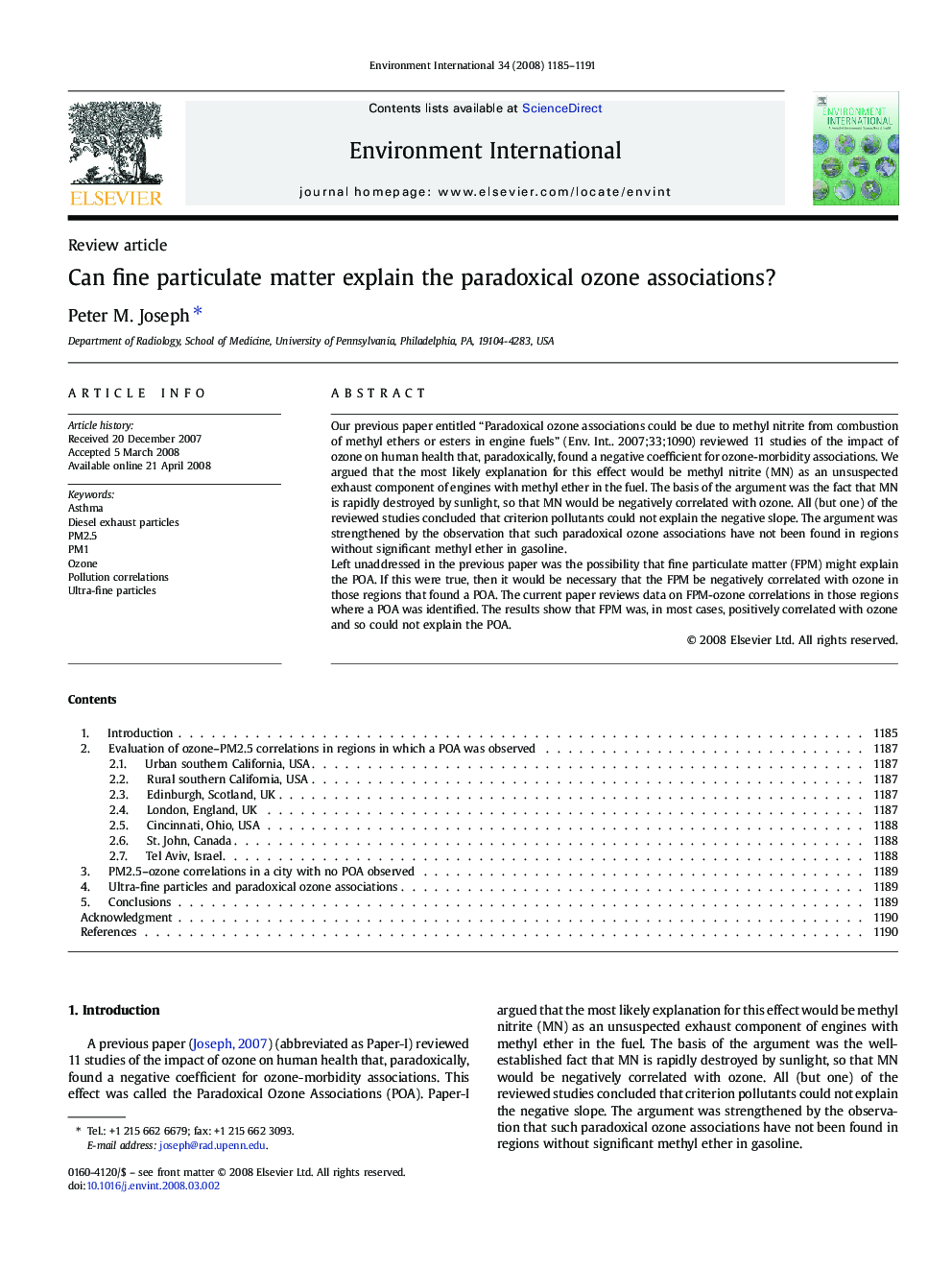| Article ID | Journal | Published Year | Pages | File Type |
|---|---|---|---|---|
| 4423637 | Environment International | 2008 | 7 Pages |
Our previous paper entitled “Paradoxical ozone associations could be due to methyl nitrite from combustion of methyl ethers or esters in engine fuels” (Env. Int.. 2007;33;1090) reviewed 11 studies of the impact of ozone on human health that, paradoxically, found a negative coefficient for ozone-morbidity associations. We argued that the most likely explanation for this effect would be methyl nitrite (MN) as an unsuspected exhaust component of engines with methyl ether in the fuel. The basis of the argument was the fact that MN is rapidly destroyed by sunlight, so that MN would be negatively correlated with ozone. All (but one) of the reviewed studies concluded that criterion pollutants could not explain the negative slope. The argument was strengthened by the observation that such paradoxical ozone associations have not been found in regions without significant methyl ether in gasoline.Left unaddressed in the previous paper was the possibility that fine particulate matter (FPM) might explain the POA. If this were true, then it would be necessary that the FPM be negatively correlated with ozone in those regions that found a POA. The current paper reviews data on FPM-ozone correlations in those regions where a POA was identified. The results show that FPM was, in most cases, positively correlated with ozone and so could not explain the POA.
